Genre: Racing Developer: Tradewest Publisher: Tradewest Players: 1-2 Released: 1992
The local Schwegmann’s supermarket was the only arcade in town growing up, and I made sure to visit the three rotating arcade games there on grocery trips. Multi-player was the name of the game back in the late 1980s, with Konami’s Teenage Mutant Ninja Turtles leading the charge, and for a while Ivan “Ironman” Stewart’s Super Off Road represented such chaotic and fun multi-player mayhem along the back wall of the grocery store. This was my first exposure to Super Off Road, a large, odd cabinet with three steering wheels spread across the control panel, the same setup the overhead F-1 racing game Super Sprint had used three years earlier. Up to three players select a truck — red, yellow, and blue — and race around a variety of dirt tracks in a three lap race. The three players compete against each other and against Ivan “Ironman” Stewart in his invincible white Toyota truck.
Well, they competed against him in the arcade game, as the 16-bit console ports omitted his license, now just called Super Off Road. The “Ironman” is a professional dirt racer with numerous victories to his name, but he’s hardly a household name and his removal from the game’s title screen is not much of a loss here. The Genesis and SNES ports also lost a player, being stripped down a maximum of two human players in a four truck race. The loss of an extra player does hurt the game, particularly one with so little depth as Super Off Road and given that it could have easily supported four players. It’s a bare bones port to a fault — pick a name, buy power ups, and race, rinse, and repeat.
Though far from a perfect arcade port, the Genesis game holds up well. It’s not as crisp or bright as the arcade or SNES ports, but the 64-color palette is able to include all of the detail of the sixteen original arcade and expansion tracks. The courses are chock full of holes, puddles, bumps, and other natural obstacles to make driving difficult. While the course detail definitely does the job replicating the arcade albeit with a dingier color scheme, it’s inexcusable that such a game would not make full use of the display. Given that the game typically only tracks four very small active sprites at any given time, it’s just bizarre that the Genesis would have to frame the screen in a black border, lessening the viewing of the action itself. Super Off Road does not come across as a game which taxes the Genesis’ hardware by any stretch of the imagination and seeing a similar shrunken display as Capcom initially considered using for its Genesis port of the far more complex Street Fighter II just reeks of lazy programming.
That’s not entirely fair, though, as Tradewest did make some attempts to enhance the game for the Genesis. The exceedingly busty women featured prominently in the game aren’t as simply colored and cartoon looking like the arcade original, but now their proportions are even more unnatural and disturbing. They’re now wearing a normal two-piece bikini instead of the slutty spenders-style outfit the arcade women wore when posing with the top three racers, who have since grown mustaches for the Genesis port. Besides being one of the more memorable aspects of the arcade game for better or worse, I also point out the scantily clad women as they are a Genesis “exclusive,” as Nintendo’s strict parenting of its games at the time had them replaced with trucks or omitted altogether. With more color and detail than the arcade in these between race moments, it would be wrong to lament the lack of “arcade perfection” as it appears Tradewest did its best to improve upon it, but at the same time, everything outside the race just looks odd due to the poor art direction.
Fortunately, the racing looks great with the trucks jittering over the tracks and jostling for position, trying to place in the top three to earn prize money. Money is used to upgrade the truck’s tires, shocks, acceleration, and top speed at the start of each race. Nitro can be purchased as well as found along the track at times, each providing a short noticeable boost which can really help overcoming the terrain and gaining an edge. The problem is that the game is too nitro-driven, as no matter how often a truck gets upgraded, nitro stock is ultimately what determines the winner. Unfortunately for the human players, the ghost of Ivan “Ironman” Stewart driving the unmarked white truck is the King of Nitro, and it’s not uncommon for him to have several dozen nitros at hand compared to the handful most human players can afford. While nitros and money can be grabbed on the track at times when they appear, they’re often in difficult to reach locations and not worth the extra effort to grab them. Thus, it’s imperative that the player come in first, as first place’s prize money of $150,000 affords the winner a lot more upgrade options than second place’s $100,000 or third place’s $50,000.
After a few races, the game’s quarter muncher roots begin to show, and no matter how well the player invests earned money, it will be impossible to compete the white truck of doom. With a bottomless well of nitros no doubt funded by the licensing fee Leland Corporation paid Stewart for use of his name, the white truck makes ludicrous gains in speed, handling, and nitro stock, even when the player repeatedly nabs the first place spot. Without the money afforded by a first place victory, it becomes difficult to keep placing each race as a larger portion of the upgrade budget must be devoted to refilling the nitro stock at $10,000 a pop.
Super Off Road is purely an arcade title, and the game offers no tournament or season setting to extend its console life. Thus, it gets old fast as a single player experience a la Arch Rivals and other arcade hits with no depth. Super Off-Road is of course more fun with a friend, but the overall sameness of the sixteen single-screen dirt tracks doesn’t help from keeping the game repetitive as cycles from race to race. While the tracks are unique in their design and variety of obstacles, the end result is still a bunch of trucks shaking and bopping for four laps over rough terrain regardless of the particular type of terrain. The huge water tracks of Pig Bog don’t react much differently than the hills of Blaster, the bumps on Volcano Valley, and so forth. After the first loop the trucks race in the opposite direction, but that, too, isn’t much to extend the home life of this arcade game. A generic rock soundtrack and sparse sound effects round out the faithful yet mediocre feeling the game exudes. The game wears thin quickly, and I suspect anyone playing it will begin to question where the fun went.
The fun was left behind at Schwegmann’s, bumping and pushing against two other strangers as we fought to stay in control of our trucks while wasting the competition. As a two-player game, Super Off Road just feels all the more hollow, and it’s a wonder why four-player support was not included in this Genesis version as it was in the NES port. Simple left/right steering and two button control (accelerate and boost) make it a game anyone can pick up and enjoy. While sometimes obstacles or the track railing can obscure the player’s truck, the vehicles themselves are pretty responsive aside from the odd spin out here or there. Ivan “Ironman” Stewart’s Super Off Road was Leland Corporation’s biggest hit before being absorbed into Tradewest, and that was due to the fantastic multi-player action, which was sadly forgotten while making the leap to the Genesis. Lackluster production and limited two-player support leave Super Off Road a weak console representation of an arcade game which ultimately will be remembered as a flash in the pan itself.
SCORE: 4 out of 10

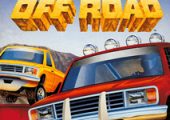
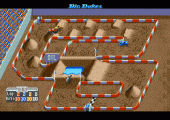
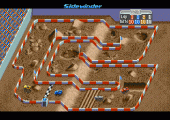
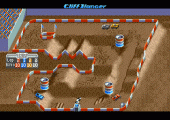
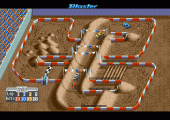
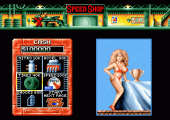
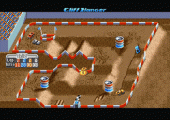
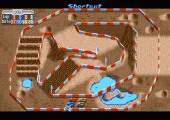
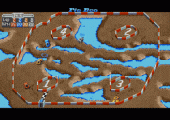
Recent Comments